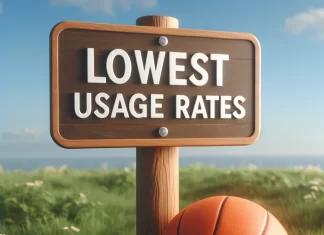Proper Bankroll management is a must-have skill for aspiring gamblers (who are looking for that elusive long-term success).
Whether they are playing poker, betting on sports, or engaging in any other form of wagering, bankroll management is a critical tool for success.
Bankroll managent is the careful planning and control of the money a bettor allocates for gambling, referred to as the “bankroll.”
Effective management of this bankroll can maximize longevity in gambling activities, minimize losses, and help gamblers achieve more consistent results.
The Basics of Bankroll Management
Bankroll management starts with setting aside a specific amount of money for gambling, separate from one’s savings or daily expenses.
This fund should only consist of money that the individual can afford to lose.
The purpose of managing this bankroll isn’t just to avoid losing money, but also to optimize the amount of money one can afford to risk on a given bet based on their total available funds.
Strategies for Bankroll Management
- Set a Budget and Stick to It: The first step in bankroll management is knowing how much money you can allocate to gambling without affecting your financial stability. This amount varies from person to person and should be reassessed periodically (e.g., monthly or annually).
- Define Betting Units: A betting “unit” is a percentage of your bankroll that you are comfortable wagering on a single bet. For conservative bankroll management, a common strategy is to risk between 1% and 2% of your bankroll on each bet. For example, if your bankroll is $10,000, a betting unit might be $100 to $200.
- Implement Stop Losses: A “stop loss” is a predetermined amount of money that you can afford to lose in a session or a day. Once you hit this limit, you stop gambling. For instance, you might set a daily stop loss of 5% of your bankroll. If your bankroll is $10,000, you stop gambling for the day once you’ve lost $500.
- Adjust Bets Based on Performance: If your bankroll increases, you can afford to increase your betting units proportionally. On the other side, if your bankroll decreases, you should reduce your betting units to preserve your bankroll.
- Avoid Chasing Losses: Chasing losses can lead to rapid depletion of your bankroll. Stick to your betting plan and accept losses as part of the game. It’s essential to maintain discipline and not deviate from your established strategy.
- Utilize a Flat Betting Strategy: This involves betting the same amount on each game or event regardless of your confidence level or odds. This strategy helps to reduce the risk of significant losses and is particularly effective for beginners.
Unit/Star Systems For Bankroll Management
A widely adopted approach to bankroll management is the use of a “star” or “unit” system.
In this method, bettors assign a rating to their bets based on confidence levels—typically structured as 1 star/unit, 2 stars/units, or 3 stars/units.
Each unit corresponds to a predetermined monetary value.
For example, if you are comfortable with $10 units, a bet of 1 unit would be $10, and a more confident bet of 3 units would be $30.
The basis on which you allocate these units to your bets depends on your analysis. You might determine that the odds are particularly favorable, often referred to as “value” or “overs,” or perhaps your confidence comes from statistical analysis that suggests a significant advantage for one side.
Whatever your method, it’s crucial to adhere strictly to these betting parameters without deviation.
While various strategies for managing a gambling bankroll exist, the most commonly agreed-upon rule is to never wager more than 2-3% of your total sports betting bankroll on any single bet. In the context of the unit/star system, this translates to placing bets that are either 1%, 2%, or 3% of your bankroll.
As your bankroll fluctuates, so too will the amount of money you wager.
Sports Betting Bankroll Management
Let’s consider a scenario where you start the NBA season with a decision to allocate $1,000 to your sports betting bankroll. Here’s how it looks:
Bankroll = $1,000
1% = $10 | 2% = $20 | 3% = $30
You have a great opening week, making several successful bets, including some three-unit and two-unit plays.
Bankroll = $1,150
1% = $11.5 | 2% = $23 | 3% = $34.5
Notice how your betting size increases when you’re winning? This dynamic approach allows you to capitalize and grow your bankroll effectively during successful periods. Conversely, it also helps safeguard your bankroll during less successful times.
Imagine that following your strong start, you hit a rough patch and experience three consecutive losing weeks.
Bankroll = $800
1% = $8 | 2% = $16 | 3% = $24
This example illustrates how adjusting your betting size based on the current state of your bankroll helps manage risks and enhances the potential for recovery and growth in NBA betting.
This strategy ensures that you never risk too much of your bankroll at once, allowing for longevity and a steadier approach to betting.
The Benefits of Sound Bankroll Management
Good bankroll management extends your gambling activity and enhances your overall experience.
By managing your funds wisely, you can endure losing streaks and capitalize on winning ones without jeopardizing your financial health. It’s about making smart decisions that increase your odds of long-term success.
Bankroll management is not just about reducing losses but about maximizing the efficiency and longevity of your gambling career. Whether you’re a casual gambler or a serious bettor, the proper use of bankroll management is a must-have tool for long-term success and your enjoyment in any gambling activity.













































